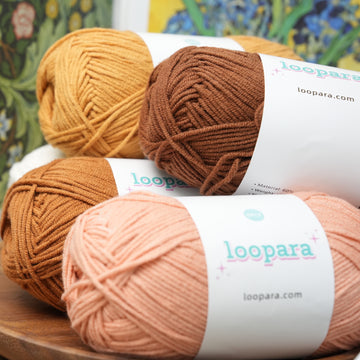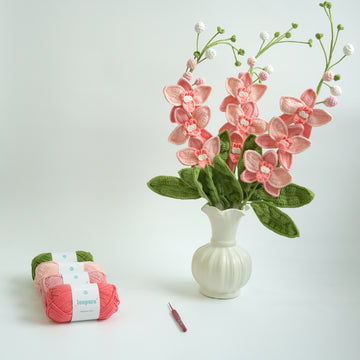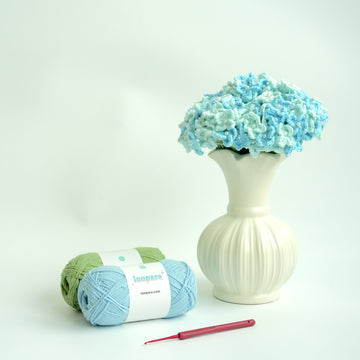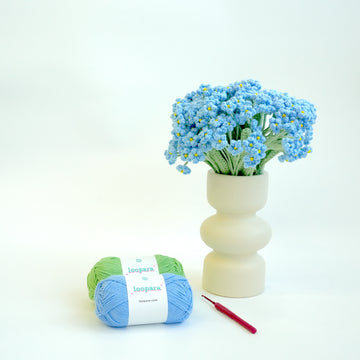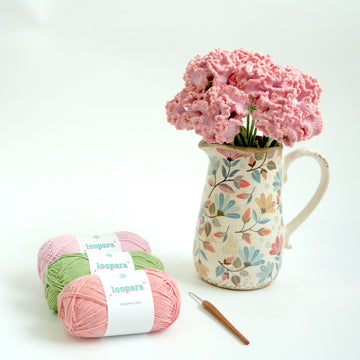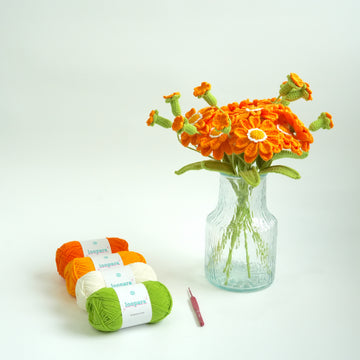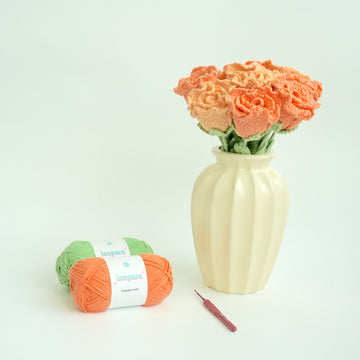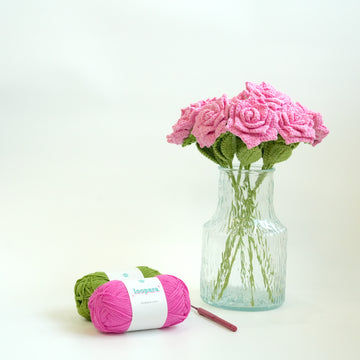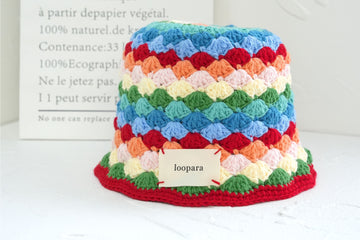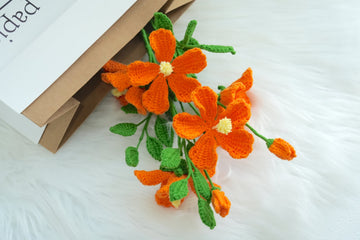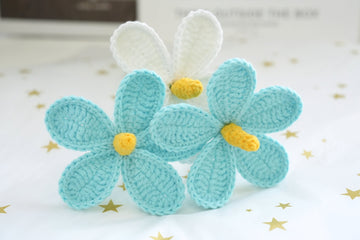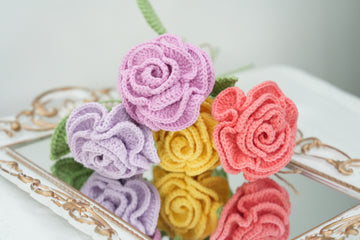Want to know how to block crochet – and why you might want to do it? You’ve come to the right place!
We have everything you need to know about blocking crochet. We’ll look at what it achieves, and different ways to do it. And we’ll explain how to choose the best approach for your project.
Ready to learn more? Then step this way.
What is blocking?
Blocking crochet means using moisture and tension to flatten your fabric. You can think of it as being a bit like ironing.
Blocking achieves several things:
- It removes curl. Sometimes the edges of crochet curl up instead of lying flat. That can be a particular issue with some kinds of stitches. But blocking will give you a nice, flat surface. And that will also make it easier to join pieces together in multi-piece projects.
- It gives shape. If your square isn’t perfectly regular or your triangle isn’t quite right, blocking can sort it out.
- It helps ensure a consistent size across garments. Careful blocking will help ensure, for example, that both sleeves of a sweater are the same length and circumference.
- It improves stitch definition. Stretching out the fabric by blocking it will open up the holes in lacey designs, giving them better definition.
- It improves drape. A blocked item will generally be softer and drape better.
Choosing your Crochet blocking technique
There are three main approaches to blocking: wet, steam, and mist. The names refer to the different ways that moisture is introduced to the fabric.
There are lots of different views out there on the best type of blocking technique for different yarns. Some people swear by steam blocking for acrylic, for example, while others say it will ruin the fabric.
If you can, test out your blocking technique on a swatch of the same fabric as your finished piece. That way, you can see how it responds without risking damage to the item you’ve spent hours crocheting.
1. Wet blocking

Sometimes referred to as “soak blocking”, wet bocking means soaking the fabric before pinning it into shape. It works best for yarns that won’t stretch more than you want them to when they’re dripping wet.
Use it for:
- Robust yarns like cotton, linen or stronger types of wool. If you’re blocking wool, adding fabric softener or wool wash to the water will help the yarn absorb the water. You can use wet blocking for acrylic too, but you may find the effects don’t last.
- Fabrics that need more intensive blocking, such as lacey designs.
2. Steam blocking

Steam blocking uses steam – either from an iron or a steamer – to moisten the fabric. The fabric won’t get as wet, but it will be exposed to high temperatures.
Use steam blocking for:
- Acrylic yarn or synthetic yarns, as long as your steamer or iron doesn’t get too hot. For acrylic, temperatures above 500 degrees Fahrenheit will cause the fabric to go limp and shiny.
- Open textured fabrics that will lose their shape if they get too wet.
3. Mist blocking

Sometimes referred to as “spritz blocking”, mist blocking uses mist from a spray bottle to moisten the fabric.
Use mist blocking:
- For delicate fibers like silk or mohair
- For pieces that need less intensive blocking
- When you want results quickly
Equipment to block crochet
You don’t need lots of expensive kit to block your crochet. But there are a few requirements:
- Pins. Depending on the size of the item, you may need a LOT of pins. It’s not uncommon to use over a hundred when blocking an adult-sized garment. Remember that the pins will get damp, so make sure they’re rust-proof. T-pins are a good choice, because they’re easy to pull out when you’ve finished.
- Blocking boards. These will give you a flat surface you can pin your items too. You can buy blocking boards with grid patterns that make it easier to check your lines and measurements.
Children’s foam play mats work well too, or you could use an ironing board if your piece is small enough. For large items like blankets, you can block them on a carpeted floor instead.
- Tape measure. This will allow you to check the measurements as you’re pinning out your piece of crochet.
And depending on your chosen blocking technique you may also need:
- Towels. If you’re wet blocking, use towels to absorb the excess moisture before you pin out your item.
- Steamer or steam iron. You’ll need this if you’re steam blocking.
- Spray bottle or plant mister. You’ll use this if you’re spray blocking.
How to wet block crochet
Step 1

Start by preparing the surface you’re going to block your item on. Make sure it’s slightly bigger than you want your finished item to be.
Step 2

Now fill a bowl, sink or bathtub (depending on the size of the item) with lukewarm water. Adding a dash of wool wash or fabric softener to the water will loosen the fibers and make it easier to stretch out the fabric. This is especially important if the fabric you’re blocking is made of wool.
Step 3

Gently submerge the item in the water and leave it there for around 10 minutes.
Step 4

When the time is up, remove your item from the water. If you’ve used detergent or fabric softener that needs to be rinsed out, do that now.
Step 5

Gently squeeze the excess water from the item. Don’t wring it out! That can damage the fibers. And don’t worry if it’s still very wet – we’ll remove more water in the next step.
Step 6

Lay the item on a towel, then take the ends of the towel and roll it into a sausage. Press firmly on your towel-sausage to squeeze out more water from the crochet fabric.
Step 7

Unroll the towel and lay your fabric on your blocking boards (or whatever surface you’re using). Use your hands to smooth your fabric out flat and into your desired shape.
Step 8

It’s now time to pin the fabric in place. Place a pin in the center of each side. Next, pin the corners. If you need your fabric to be a precise measurement, use your tape measure to check that now. Unpin the corners and adjust if necessary.
Step 9

Now add the remaining pins at regular intervals between those that are already there. Place them as close together as is necessary to achieve your desired shape.
Step 10

Leave the fabric to dry. This can take a long time, even a couple of days, for larger items. Don’t move onto the next step until the whole piece is completely dry.
Step 11

Remove the pins and admire the results!
How to steam block crochet
Step 1

Prepare your blocking surface. Make sure it’s at least a bit bigger than the dimensions you want your finished item to be.
Step 2

Lay your item onto the surface, and smooth it as flat as possible with your hands.
Step 3

Now pin the fabric into place, pulling it into the right shape as you work. Start by pinning the centre of each edge, then the corners.
Step 4
If you need your item to be a particular size, measure each side after you’ve positioned the corner pins. Re-pin as necessary so your item is the right size.
Step 5
Now add the remaining pins at regular intervals. Use as many as you need to get the shape right.
Step 6

Take your steam iron or steamer and hold it an inch or two above the fabric. Don’t let it touch the fabric. Now give the fabric a good long burst of steam.
Step 7

Leave the fabric pinned in place to dry thoroughly.
Step 8

Remove the pins. Take care – if you haven’t left it very long after steaming, they may still be hot.
How to mist block crochet
Step 1

Prepare the surface you’re going to pin your item to. Make sure it’s at least a bit bigger than the dimensions you want your finished item to be.
Step 2

Fill your spray bottle or plant mister with enough water to thoroughly dampen your item.
Step 3

Place the item on the boards (or whatever flat surface you’re using) and smooth it into shape with your hands.
Step 4

If you have time, you’ll get better results by pinning the item in place. But the beauty of mist blocking is that it can be done quickly. So if you don’t need perfection, you can skip this step.
Step 5

Spritz the item with water, making sure you cover every part of the surface. The wetter it gets, the better the results are likely to be – but the longer it will take to dry. And if you’re worried about the color fastness of the item, stick to a light misting.
Step 6

Leave it to dry. If you’ve used pins, wait until the fabric is completely dry to remove them.
Summary: When and how to block crochet
Blocking crochet is a great way to give it a professional finish. It will create a more uniform appearance, give you a consistent size across garments, improve drape, and add definition to lacey designs.
Wet blocking means getting your fabric thoroughly wet before smoothing and pinning it into shape. Steam blocking uses steam to moisten dry fabric. And mist blocking uses a fine spray of water to relax the fibers.
Choose the right technique for your fabric. Wet blocking works well for stronger yarns and projects that need more intensive blocking. Steam blocking is a good option for synthetic yarns, as long as the temperature doesn’t get too high. And mist blocking is great for delicate fibers.
Whichever approach you choose, blocking will add the finishing touch to your project.


